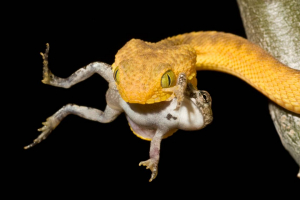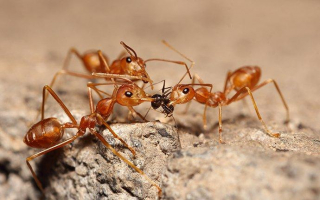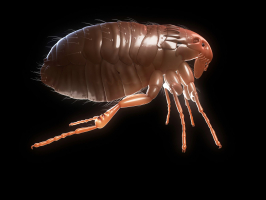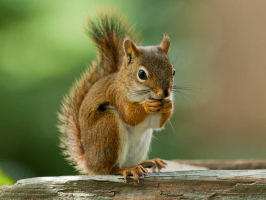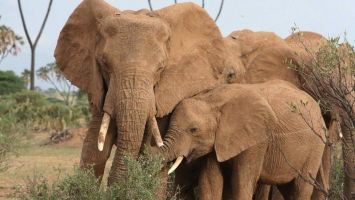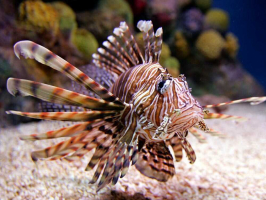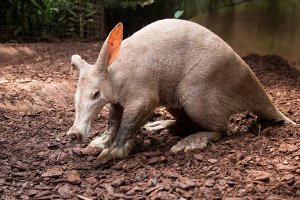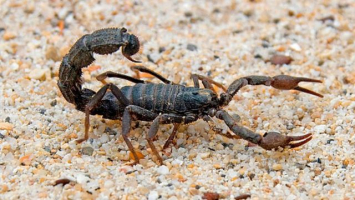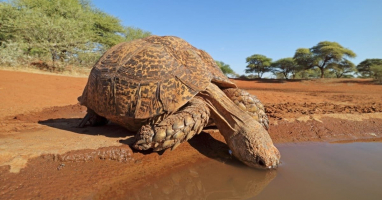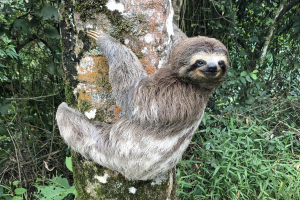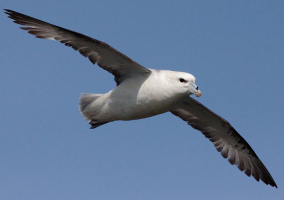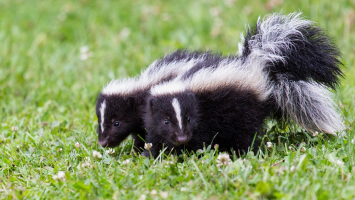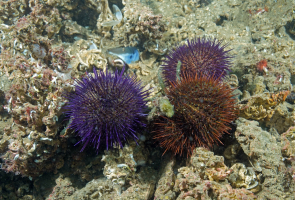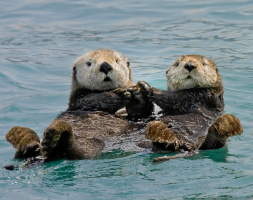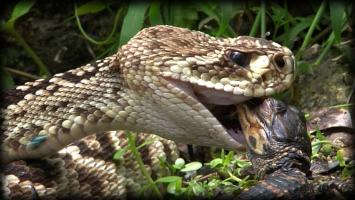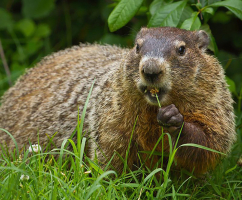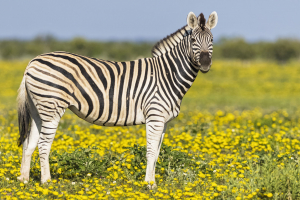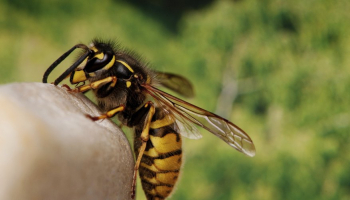Top 12 Predators of Raccoons that Eat Raccoons
The raccoon, often known as the common raccoon to distinguish it from other species, is a North American mammal. Three of the raccoon's most distinguishing ... read more...characteristics are its very dexterous front paws, facial mask, and ringed tail, all of which are motifs in indigenous peoples of the Americas' legends about the animal. Here are 12 predators of raccoons that eat raccoons.
-
The alligator is one of the predators of raccoons that eat raccoons. An alligator is a huge reptile in the Crocodilia order, belonging to the family Alligatoridae and belonging to the genus Alligator. The American alligator and the Chinese alligator are the two existing species. Several extinct alligator species are also known from fossil remains. Alligators originally appeared around 37 million years ago during the Oligocene epoch.
Alligators eat different foods depending on their age and size. Alligators eat fish, insects, snails, crabs, and worms while they are young. As they age, they take larger prey, such as gar, turtles, and numerous mammals, including coypu and muskrat, as well as birds, deer, and other reptiles. Gizzard stones are also common in their stomachs. If they are sufficiently hungry, they will even ingest carrion. Larger alligators have been known to ambush dogs, Florida panthers, and black bears in some situations, making them the apex predator throughout their range.
As a top predator, it may influence the number of prey species such as turtles and coypu. As humans intrude on their habitat, attacks are rare but not unheard of. Alligators, unlike huge crocodiles, do not automatically perceive humans as prey when they come into contact with them, although they may attack in self-defense if provoked. Adult alligators can consume mammals such as raccoons, according to Kylon (large aquatic rodents). Anything that swims in the water or comes to the bank for a drink is prey for a huge alligator. Examples include deer and wild boars.
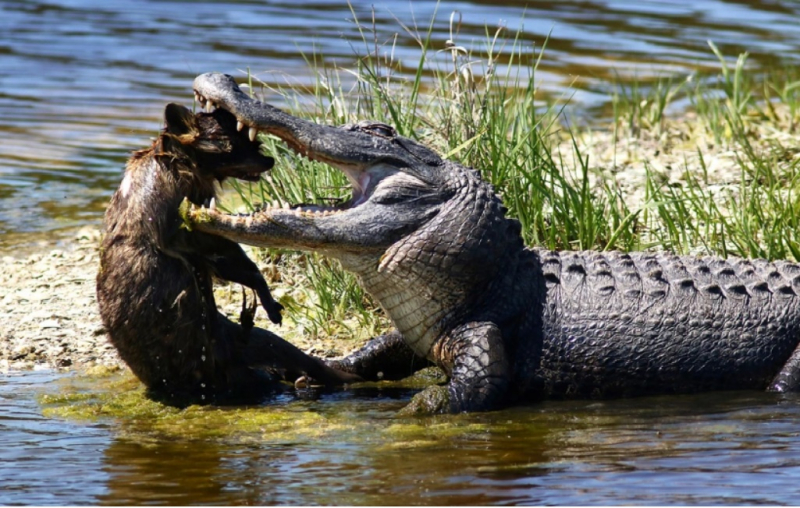
phillanoue.com 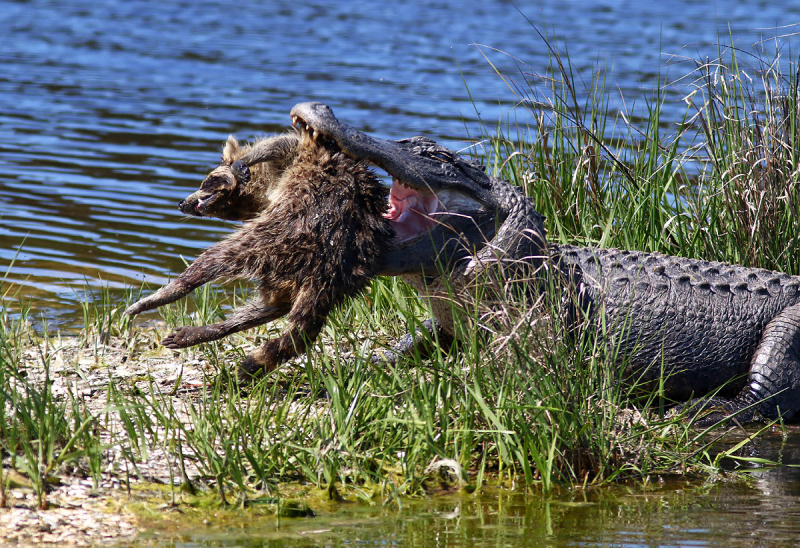
phillanoue.com -
The coyote (Canis latrans) is a North American canine species. It is slightly smaller than its near relative, the wolf, as well as the closely related eastern wolf and red wolf. It occupies a similar ecological niche as the golden jackal in Eurasia. A behavioral ecologist once referred to the coyote as the American jackal because it is larger and more predatory.
The coyote's diet is quite diverse, but it is largely carnivorous, with meat accounting for 90 percent of its diet. Bison (primarily as carrion), white-tailed deer, mule deer, moose, elk, bighorn sheep, pronghorn, rabbits, hares, rodents, birds (particularly Galliformes, roadrunners, young water birds, pigeons, and doves), amphibians (except toads), lizards, snakes, turtles and tortoises, fish, crustaceans, and insects are among Coyotes may be selective about their prey, as shrews, moles, and brown rats do not appear in their diet in proportion to their abundance. Terrestrial and/or burrowing small mammals, such as ground squirrels and related species (marmots, prairie dogs, chipmunks), as well as voles, pocket gophers, kangaroo rats, and other ground-favoring rodents, may be common meals, particularly for lone coyotes.
Zackary DeAngelis from Pest Pointers LLC explains that raccoons don't make up a big part of a coyote's diet, but the cunning coyote is opportunistic and will not pass up a meal if it comes too close. Coyotes mostly feed on white-tailed deer, which is their primary food source. If they come across one another, they'll scavenge for plants, rodents, voles, rabbits, and even foxes. Coyotes are diurnal, meaning that they are most active during the day. Coyotes have become nocturnal to avoid humans in areas where there is human activity (which is almost everywhere nowadays). Coyote packs will usually split up when hunting, and they will hunt alone or in pairs. Raccoons and coyotes will usually stay out of each other's way. Coyotes don't always want to bother raccoons because they are large enough prey. Because each animal has an exceptional sense of smell, it can easily keep its distance.
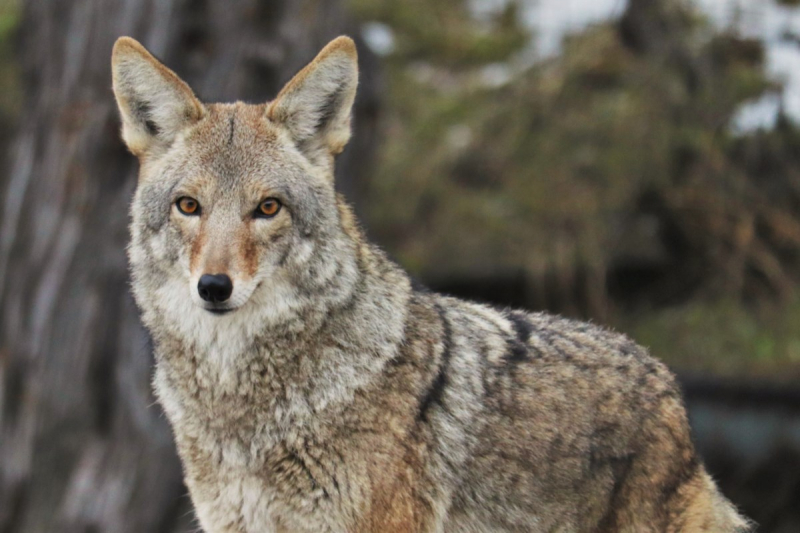
vancouverisawesome.com 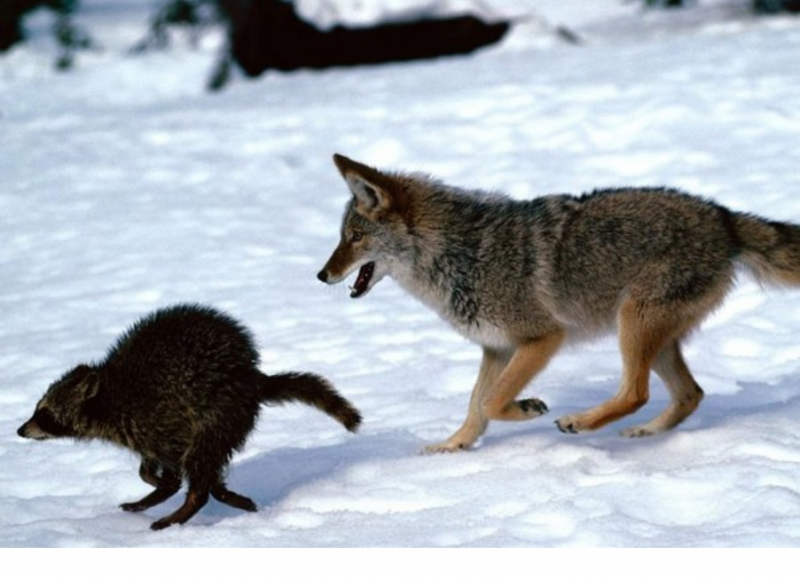
quora.com -
The great horned owl (Bubo virginianus), also known as the tiger owl (originally derived from early naturalists' description as the "winged tiger" or "tiger of the air"), or the hoot owl, is a large owl native to the Americas. It is an extremely adaptable bird with a vast range and is the most widely distributed true owl in the Americas. Its primary diet is rabbits and hares, rats and mice, and voles, although it freely hunts any animal it can overtake, including rodents and other small mammals, larger mid-sized mammals, birds, reptiles, amphibians, and invertebrates. In the ornithological study, the great horned owl is often compared to the Eurasian eagle-owl (Bubo bubo), a closely related species, which despite the latter's notably larger size, occupies the same ecological niche in Eurasia, and the red-tailed hawk (Buteo jamaicensis), with which it often shares similar habitat, prey, and nesting habits by day thus is something of a diurnal ecological equivalent. The great horned owl is one of the earliest nesting birds in North America, often laying eggs weeks or even months before other raptorial birds.
In most aspects of their behavior, great-horned owls are typical of owls and most birds of prey. From experimentally raising young owls in captivity, Paul L. Errington felt that they were a bird of "essentially low intelligence" who could only hunt when partially wild and instinctually driven by hunger to hunt whatever they first encounter. Like most owls, the great horned owl makes great use of secrecy and stealth. Great Horned Owls are a big concern with juvenile raccoons. Baby and teenage raccoons that wander too far from the den can fall prey to horned owls, who mostly hunt at night. Some adult raccoons will find themselves in a fight with a horned owl when they try to steal eggs from its nest.
Due to its natural-colored plumage, it is well camouflaged both while active at night and while roosting during the day. During the daytime, it roosts usually in large trees (including snags & large hollows but usually thick branches) but may occasionally be in crevices or small caves in rocks or in dense shrubbery. Pine and other coniferous trees may be preferred where available since they are particularly dense and provide cover throughout the year. Typically, males have a favorite roosting site not far from the nest, sometimes used over successive years.
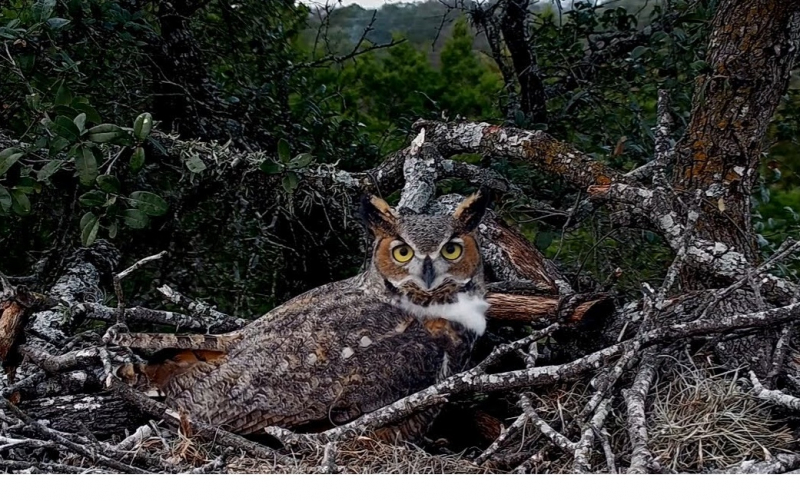
thekidshouldseethis.com 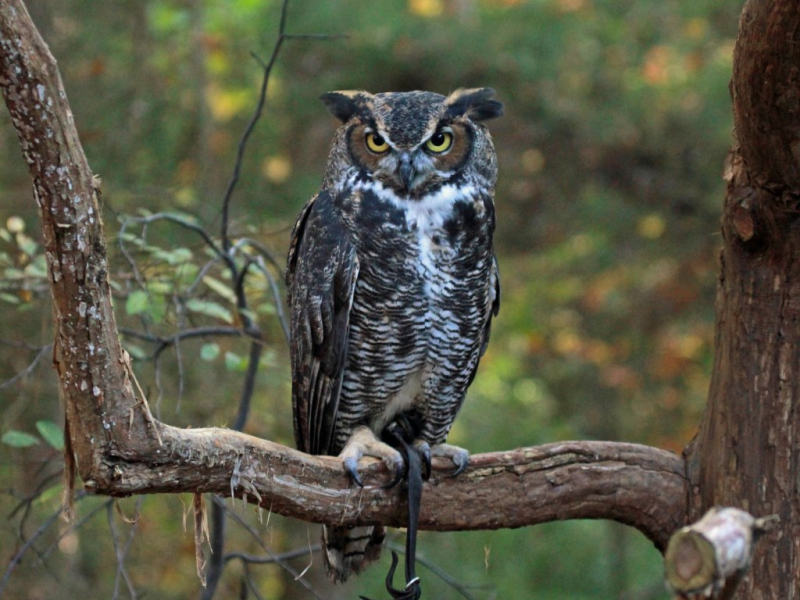
wolfriver.org -
The golden eagle (Aquila chrysaetos) is a Northern Hemisphere bird of prey. It is the most widely dispersed eagle species. It, like all eagles, is a member of the Accipitridae family. They are one of the most well-known raptors in the Northern Hemisphere. These birds have dark brown plumage with lighter golden-brown feathers on their napes. This species' immature eagles often have white on the tail and white markings on the wings. Golden eagles hunt a range of prey, primarily hares, rabbits, and marmots, as well as other ground squirrels, using their agility and speed, as well as powerful feet and large, pointed talons.
Golden eagles have home ranges or territories that can be up to 200 km2 (77 sq mi). They construct huge nests on cliffs and other high sites, where they may return for numerous breeding seasons. The majority of breeding occurs in the spring; they are monogamous and may stay together for several years, if not for life. Females lay up to four eggs, which they then incubate for six weeks. In most cases, only one or two offspring survive to fledge in about three months. These adolescent golden eagles often achieve full freedom in the fall, following which they roam widely until they establish a territory for themselves in four to five years.
It was once common throughout the Holarctic, but it has since vanished from many heavily populated places. Despite being extinct or rare in areas of its historic range, the species is still widespread, with populations found in large swaths of Eurasia, North America, and parts of North Africa. It is the largest and least abundant of the five true accipitrid species that breed in both the Palearctic and the Nearctic. For generations, this species has been recognized as one of the most prestigious birds employed in falconry. Because of its hunting skill, the golden eagle is held in high regard in several ancient tribal societies. In some sections of its range, such as the Western United States and the Western Palearctic, it is one of the most intensively researched raptor species on the planet. Golden eagles rank near the top of the list of North America's largest birds. They can have a wingspan of up to 7 feet and weigh 13 pounds when fully mature. Despite the fact that these enormous birds have been observed hunting bighorn sheep, they rarely prey on raccoons.
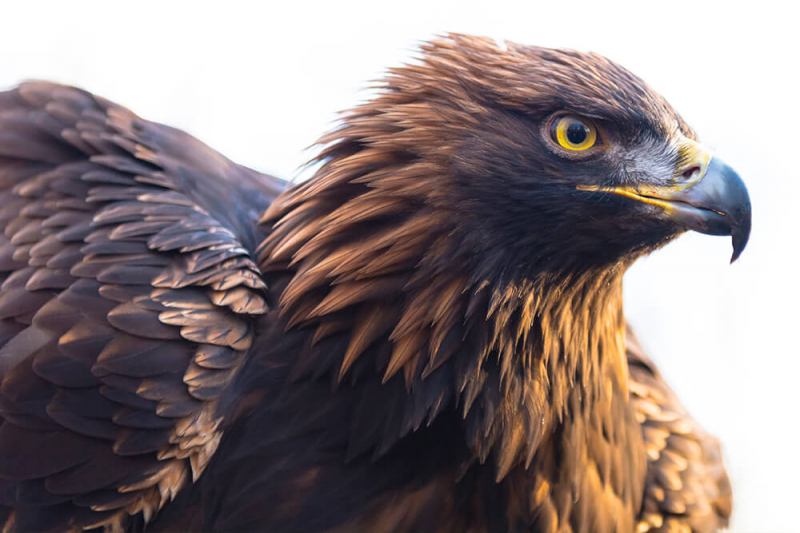
animals.sandiegozoo.org 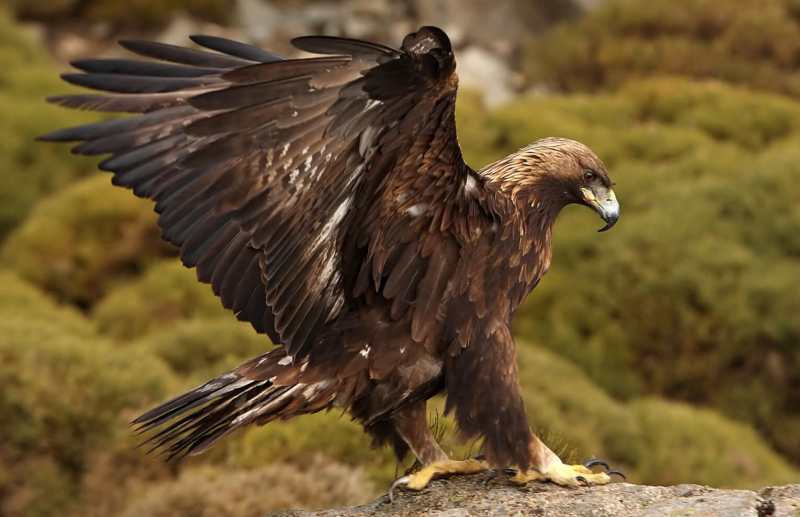
abcbirds.org -
The bald eagle (Haliaeetus leucocephalus) is a North American bird of prey. A sea eagle has two subspecies and forms a species pair with the white-tailed eagle, which occupies the same Palearctic niche as the bald eagle. Its range encompasses the majority of Canada and Alaska, the whole contiguous United States, and northern Mexico. It can be found around huge amounts of open water with enough food and old-growth trees for nesting.
The bald eagle is an opportunistic eater that primarily feeds on fish, which it swoops down on and snatches with its talons from the water. It has the largest nest of any North American bird and the largest tree nest ever recorded for any animal species, measuring up to 4 m (13 ft) deep, 2.5 m (8.2 ft) wide, and weighing 1 metric ton (1.1 short tons). Sexual maturity is reached between the ages of four and five. Adults are mostly brown with white heads and tails. The plumage of the sexes is identical, however, females are around 25% larger than males. The hooked golden beak is big. The immature's plumage is brown.
The bald eagle is an opportunistic carnivore that may ingest a wide range of animals. Throughout their range, fish are frequently the primary source of food for eagles. In 20 dietary habit studies conducted across the species' range, fish made up 56% of nesting eagles' diet, birds 28%, mammals 14%, and other prey 2%. More than 400 species are known to be included in the bald eagle's prey spectrum, significantly more than its Old World biological equivalent, the white-tailed eagle. Having said that, bald eagles will not pass on a small-to-medium-sized raccoon if the opportunity presents itself. Bald eagles aren't fussy about the quality of their meals.
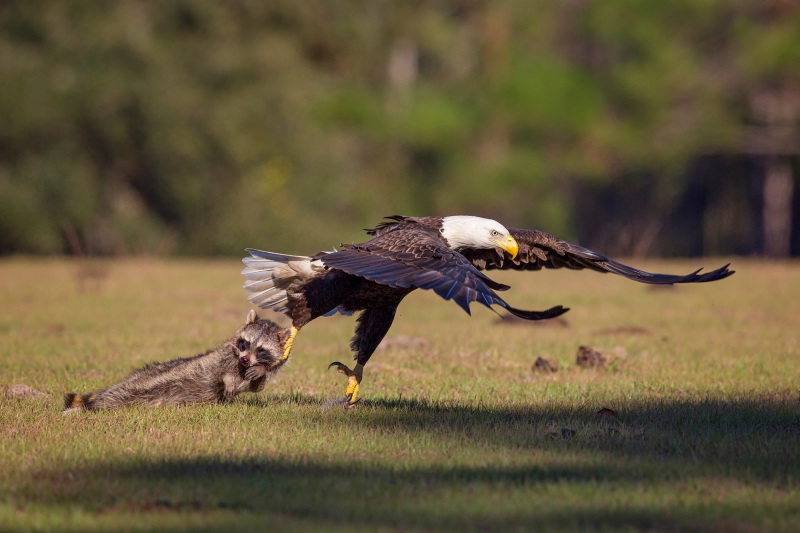
news.cgtn.com 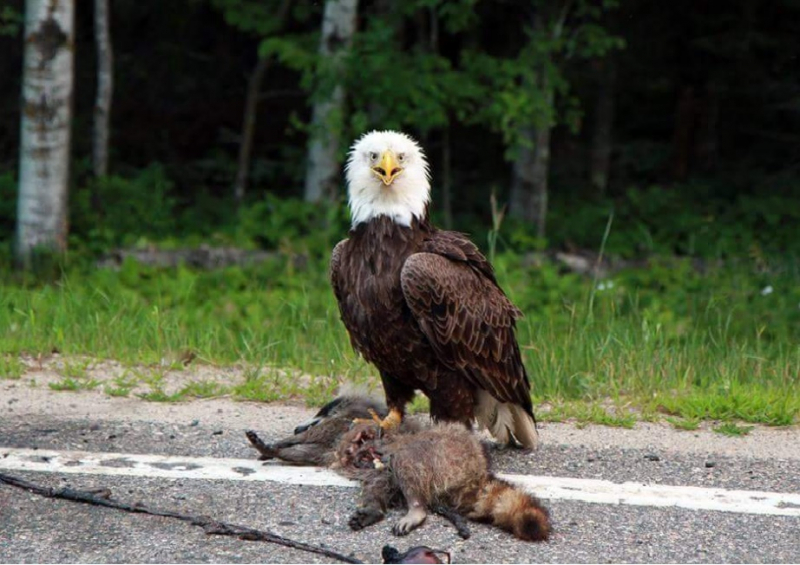
reddit.com -
The wolf is a huge canine native to Eurasia and North America. It is sometimes known as the gray wolf or grey wolf. More than thirty subspecies of Canis lupus have been identified, with gray wolves being the most well-known. A wolf's banded fur is typically mottled white, brown, gray, and black, however polar varieties may be virtually entirely white.
The wolf is the most adapted member of the Canis genus for cooperative game hunting, as evidenced by its physical adaptations to tackle enormous prey, its more sociable character, and its highly refined expressive behavior, including solo or group, howling. It travels in nuclear families made up of a mated pair and their progeny. When offspring reach sexual maturity and there is competition for food within the pack, they may depart to create their own packs. Wolves are also territorial, and territorial conflicts are one of the leading causes of wolf mortality. The wolf is primarily a carnivore, eating large wild-hooved mammals, as well as smaller animals, cattle, carrion, and rubbish. Single wolves or married pairs have a better hunting success rate than huge packs.
Wolves are carnivores, and while they do a lot of scavenging, they are also great hunters. Wolves hunt in packs to catch huge prey animals, but a lone wolf can easily dispatch a raccoon. Wolves are well known for their abilities to hunt various prey in pack formation. They will consume small to medium-sized animals such as deer and fish. Adult raccoons are actively hunted, killed, and eaten by wolves. According to Arnold, a pack of wolves can detect raccoons up to 1.5 miles away, owing to their keen sense of smell. Raccoons are scared of wolves and will seek refuge in trees, holes in the ground, or other suitable hiding places. If a raccoon notices a pack of wolves close, it will seek refuge in houses, vehicles, and other man-made structures.
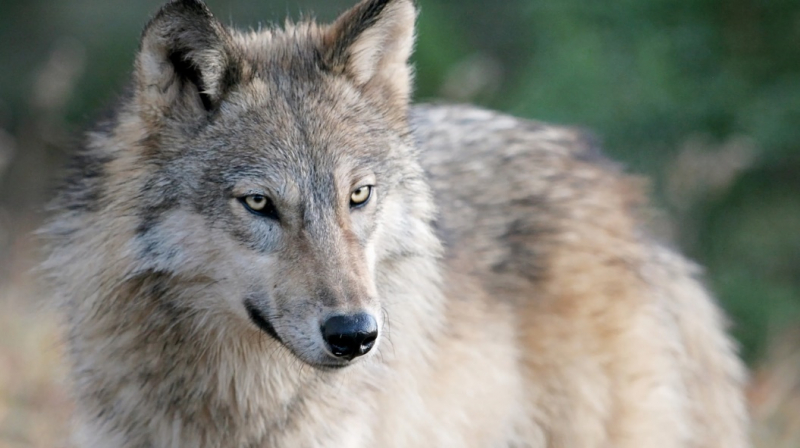
detroitnews.com 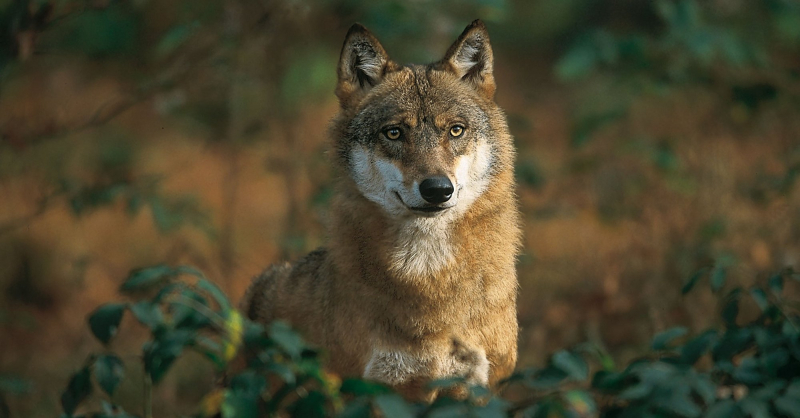
euronatur.org -
All snakes are carnivorous and feed on small animals such as lizards, frogs, other snakes, small mammals, birds, eggs, fish, snails, worms, and insects. Snakes cannot bite or tear their prey into bits, thus they must swallow it whole. A snake's eating habits are heavily determined by its body size; smaller snakes consume smaller food. For example, juvenile pythons may feed on lizards or mice as a juvenile and then progress to small deer or antelope as an adult. Most snakes are nonvenomous, and those that are venomous use them to kill and subdue prey rather than for self-defense. Some have venom strong enough to cause severe harm or death in humans. Nonvenomous snakes consume their prey alive or kill by constriction.
Local species will enter a period of brumation if winters are too cold for them to withstand while being active. Unlike hibernating mammals, which are genuinely asleep, brumating reptiles are awake yet inactive. Individual snakes can brumate in tunnels, under rock piles, or inside fallen trees, while huge groups of snakes can brumate in hibernacula.
Snakes, particularly larger snakes that frequently plunge into water, are also common predators of raccoons, according to Chris, a founder of Fauna Facts (an animal and pets resource site). These animals, particularly pythons, will easily consume a raccoon. They can swallow it whole, but they must first squeeze it to kill them. Other snakes, such as cobras and larger snakes, have the ability to trap raccoons.
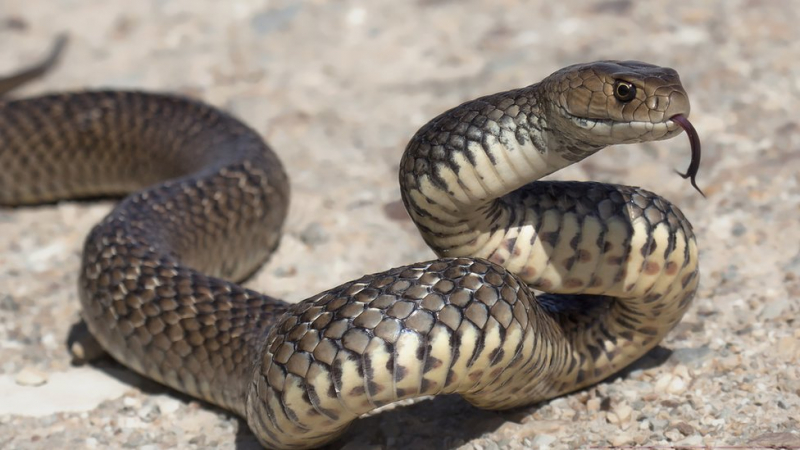
bbc.com 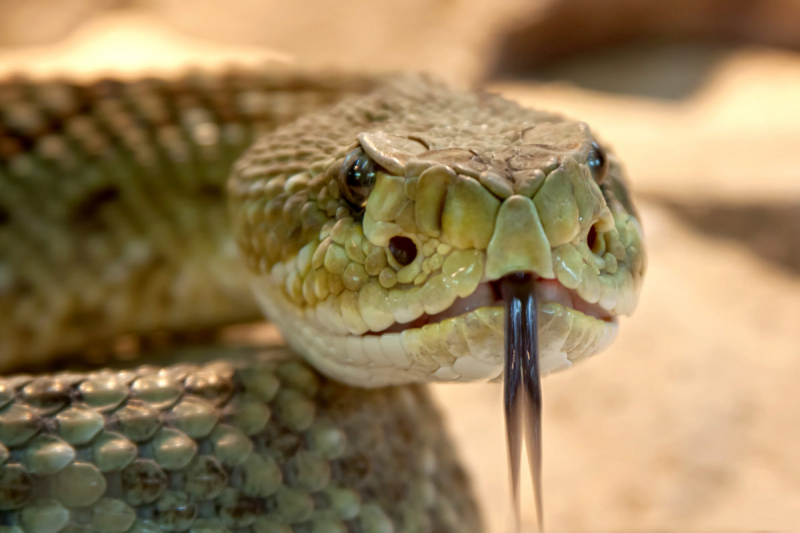
houstonpublicmedia.org -
The fisher is a small carnivorous mammal native to North America, a forest-dwelling critter whose habitat extends from Canada's boreal forest to the northern United States. It is a member of the mustelid family (often known as the weasel family) and belongs to the monospecific genus Pekania. It is sometimes incorrectly referred to as a fisher cat, despite the fact that it is not a cat.
Fishers are all-around predators. Although their major food is snowshoe hares and porcupines, they have also been observed eating insects, nuts, berries, and mushrooms. Because they hunt alone, their prey selection is limited by their size. Analyses of stomach contents and scat have revealed signs of birds, small mammals, and even deer, indicating that they are not afraid of eating carrion. While not common, fishers have been reported to kill larger creatures such as wild turkey, and bobcat (though most encounters are controlled by the cat, which routinely preys on them and is one of their main predators), and Canada lynx.
They also eat raccoons, according to Zack DeAngelis, an author from Pest Pointers LLC. Fishers prefer to make their homes near fallen logs, rock crevices, and the hollows of huge trees. Raccoons also make their homes in these regions. As a result, fisher-raccoon interactions are common in areas where fishers live. Raccoons are heavier than fishers, which weigh around 10 pounds less than a 20-pound raccoon. Fishers are around a foot long, but it is mostly due to their tail. When trapped or threatened, both fishers and raccoons may be aggressive. Both have claws, while a fisher's claws are partially retractable, like a cat's. They benefit from this when climbing trees. Fishers often prey on smaller creatures than themselves. Raccoons are not lighter than humans, despite their smaller stature. Although fishers are unlikely to intentionally chase raccoons if they are very hungry or come up
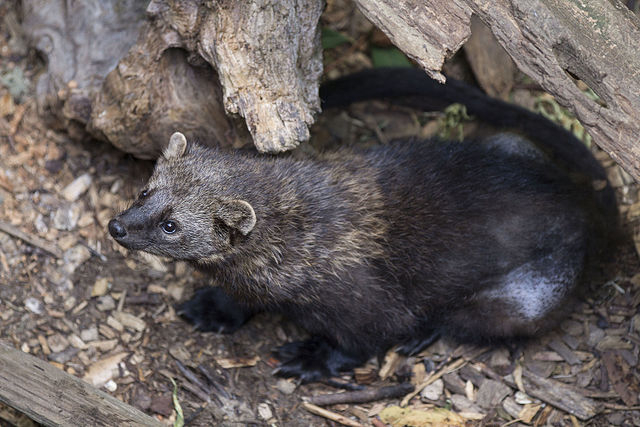
carnivora.net 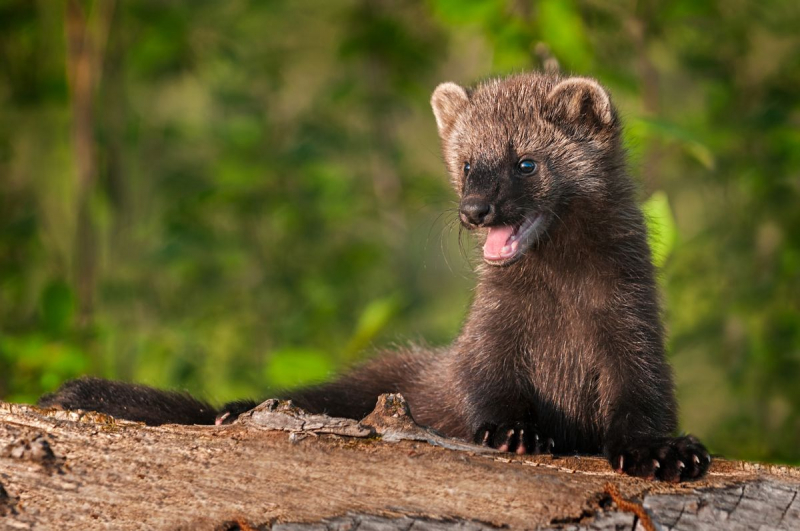
livescience.com -
The next predators of raccoons that eat raccoons that we want to introduce are the bobcat. The bobcat (Lynx rufus), often known as the red lynx, is a North American medium-sized cat. It stretches from southern Canada to Oaxaca in Mexico, traversing the majority of the contiguous United States. Due to its widespread distribution and high population, it has been classified as Least Concern on the IUCN Red List since 2002. Despite considerable hunting for both sport and fur, numbers have remained steady but dropped in some locations.
It gets its name from the black bars on its forelegs and the black-tipped, stubby (or "bobbed") tail. It can grow to be up to 125 cm long (including the tail) (50 in). It is a versatile predator that can be found in woodland areas, semidesert, urban edges, forest edges, and swampland habitats. It still exists in some of its native territories, although populations are threatened by coyotes and domestic animals. Despite its preference for rabbits and hares, the bobcat also hunts insects, chickens, geese and other birds, small rodents, and deer. Prey selection is influenced by location and habitat, as well as season and abundance. The bobcat, like most cats, is territorial and mostly solitary, with an occasional overlap in home areas. It marks its territory with claw marks and deposits of urine or feces, among other things. The bobcat breeds from winter to spring and has a two-month gestation period.
Because of their small size and lack of an efficient defensive mechanism, raccoons are some of a bobcat's favorite prey. These raccoon predators, like coyotes, move into stealth mode when they spot their prey and then pounce on them. Bobcats can leap 10 feet in one bound, making their attack devastating.
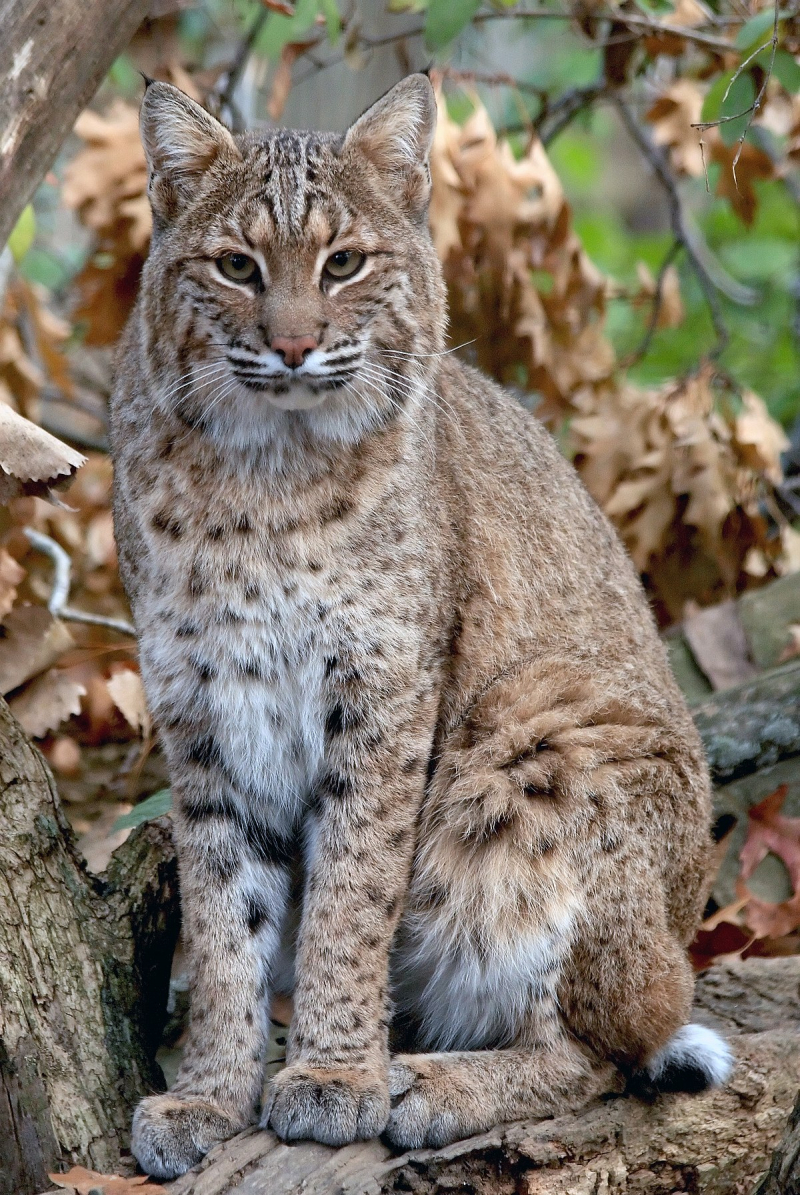
en.wikipedia.org 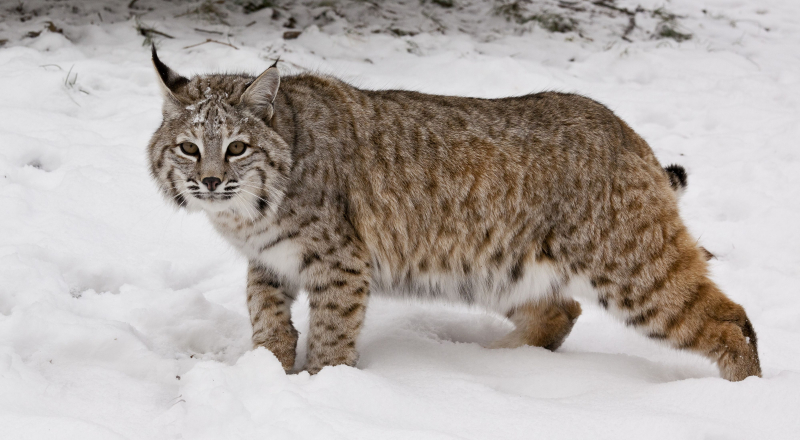
nature.org -
The red fox (Vulpes vulpes) is the largest of the genuine foxes and one of the most extensively dispersed members of the order Carnivora, occupying most of North America, Europe, and Asia, as well as parts of North Africa. The IUCN considers it to be of the least concern. Its distribution has expanded in tandem with human growth, and it has been brought to Australia, where it is thought to be damaging to local mammal and bird species. Because of its prevalence in Australia, it has been named one of the world's 100 worst invasive species.
Red foxes are typically seen in couples or small groups made up of families, such as a mated pair with pups, or a male with multiple females with familial ties. The mated pair's offspring stay with their parents to help care for new kits. Small rodents are the species' primary prey, but they may also prey on rabbits, squirrels, game birds, reptiles, invertebrates, and young ungulates. Fruit and vegetable debris are also consumed on occasion. Although the red fox preys on smaller predators, including other fox species, it is prey to larger predators such as wolves, coyotes, golden jackals, large predatory birds such as golden eagles, and Eurasian eagles owls, and medium- and large-sized felines.
Raccoons and red foxes frequently share habitats and are both adaptive to new situations. They are both nocturnal species, however, foxes are frequently seen hunting or roaming between cover during the day. According to the University of Michigan, red foxes prefer rabbits, mice, and various fruits as a diet. Foxes are only slightly larger than raccoons, but they can still catch them. They employ the crucial mechanism of remaining hidden for as long as possible before attacking the raccoon, giving it little time to prepare. According to Zack DeAngelis, a red fox eating a raccoon is more likely to be roadkill than a fox chasing one. Foxes, on the other hand, will go after raccoon kits or juvenile raccoons since they are about the size of a rabbit. Red foxes are lonely animals. They do not form packs in the same way that coyotes and wolves do. As a result, a red fox is unlikely to consistently assault a raccoon. A specific condition, such as an old or ill raccoon or a very young raccoon, is more likely.
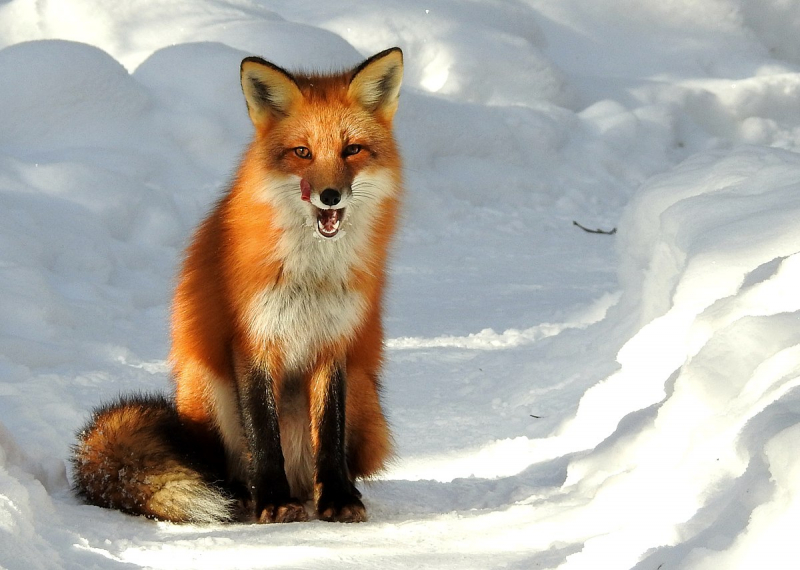
en.wikipedia.org 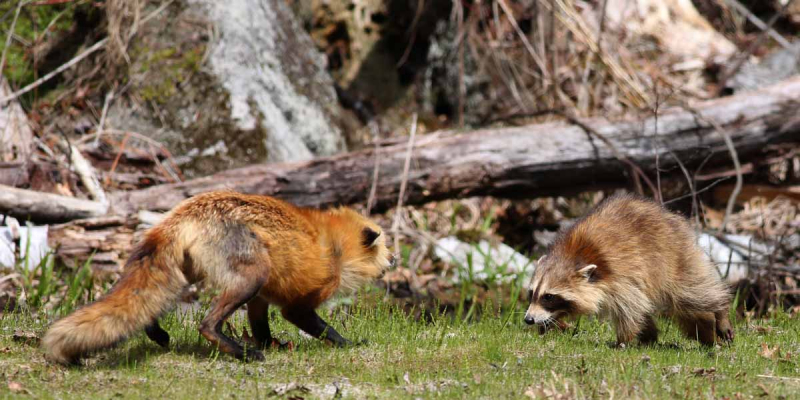
naturallycuriouswithmaryholland.wordpress.com -
The cougar is one of the most predators of raccoons that eat raccoons. The cougar is a huge cat that is indigenous to the Americas. It has the widest range of any big wild terrestrial animal in the Western Hemisphere, stretching from the Canadian Yukon to the southern Andes in South America. It is a versatile, generalist species that can be found in the majority of American habitats. It has various names due to its extensive range, including puma, mountain lion, catamount, and panther.
The cougar is an ambush predator that hunts a diverse range of prey. The primary food source is ungulates, especially deer, but it also hunts smaller animals such as rodents. It favors dense underbrush and rocky regions for stalking but can also be seen in open areas. The cougar is a territorial animal that prefers low population numbers. Individual home ranges are determined by terrain, flora, and prey quantity. Despite its size, it is not necessarily the apex predator in its region, giving up prey to American black bears, grizzly bears, and packs of wolves. It is alone and avoids contact with others. Human fatalities are uncommon but have increased in North America as more people have moved into cougar territory and developed farms.
Cougars and raccoons will encounter each other in some areas, and these confrontations rarely end well for the smaller species, which in this case is the raccoon. Cougars have the power and agility to pursue a raccoon even if it attempts to flee or fight back.
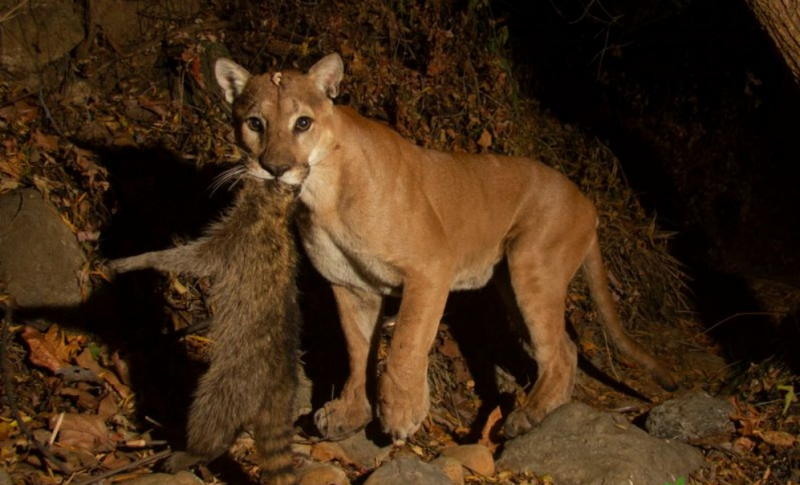
orangecountyoutdoors.com 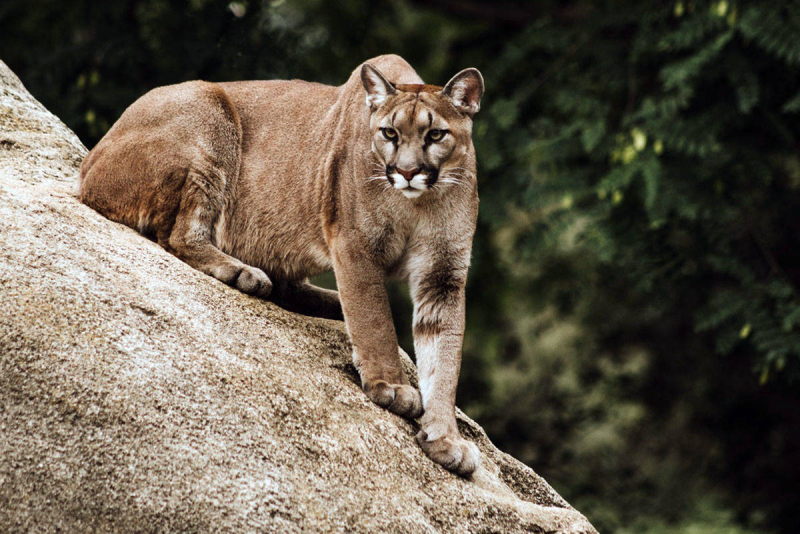
sookenewsmirror.com -
The Canada lynx (Lynx canadensis), sometimes known as the Canadian lynx, is a North American felid that lives in woodland and tundra habitats throughout Canada, Alaska, and parts of the northern United States. Historically, the Canadian lynx stretched from Alaska to numerous northern states in the United States. It lived in the transition zone between boreal coniferous forests and deciduous woods in the eastern states. It had been successfully reintroduced into Colorado, where it had become extinct in the 1970s, after an 11-year effort. The Canada lynx has classified as a threatened species in the lower 48 states by the United States Fish and Wildlife Service in 2000.
The Canada lynx is an excellent climber and swimmer, and it builds rough shelters beneath fallen trees or rock ledges. It has a thick coat and large paws and can maintain its weight on the snow twice as well as the bobcat. The Canada lynx eats nearly entirely on snowshoe hares, and its population is extremely dependent on this prey animal. If hare numbers diminish, it will also hunt medium-sized animals and birds.
Bobcats and Canadian Lynx are all members of the same mammalian family and genus, Felidae and Lynx, respectively. Because of this connection, these creatures all have very similar physical appearances. Bobcats and Canadian lynx have one thing in common: they're both predators, and raccoons are one of their victims, owing to their smaller size and lack of a defense system that can fend off larger predators. Canadian lynx attack their prey in the same way that bobcats do: by approaching the target discreetly and abruptly pouncing on them.
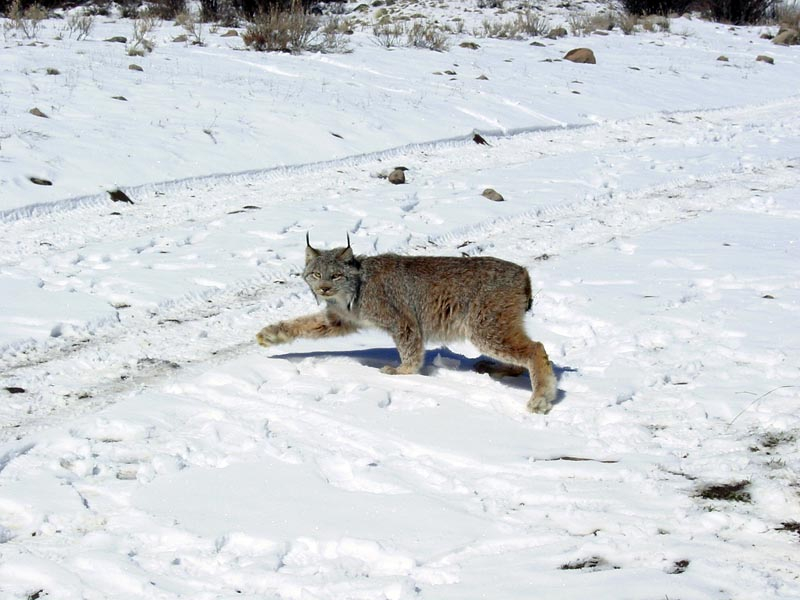
nhpbs.org 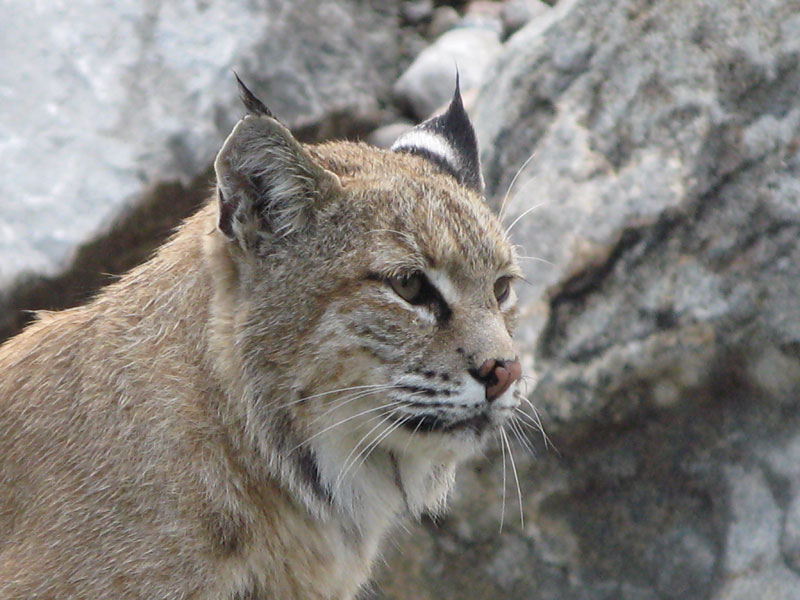
hww.ca














